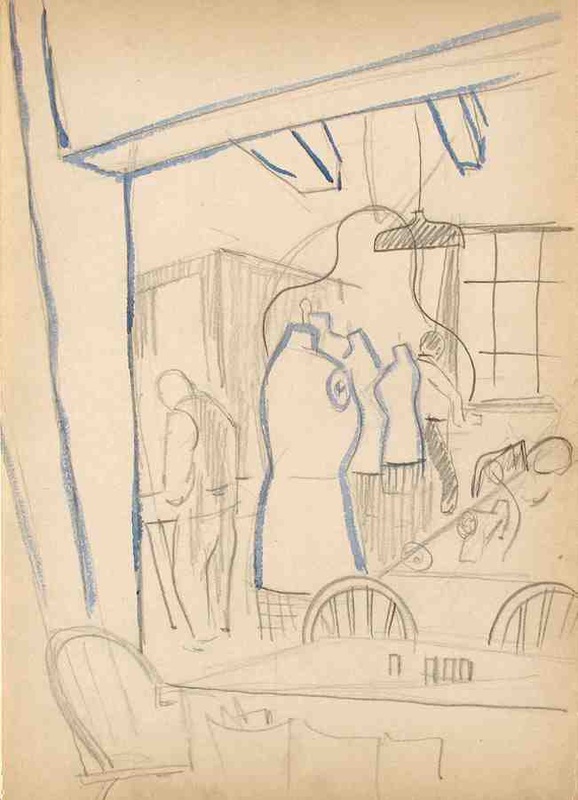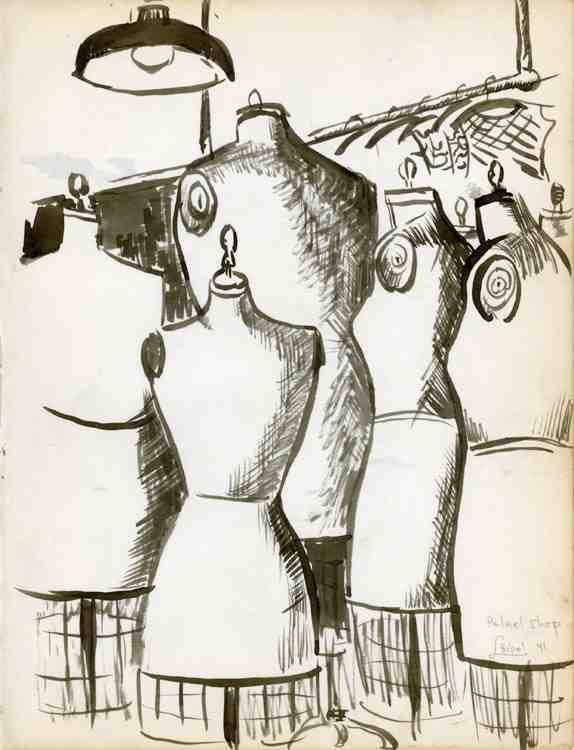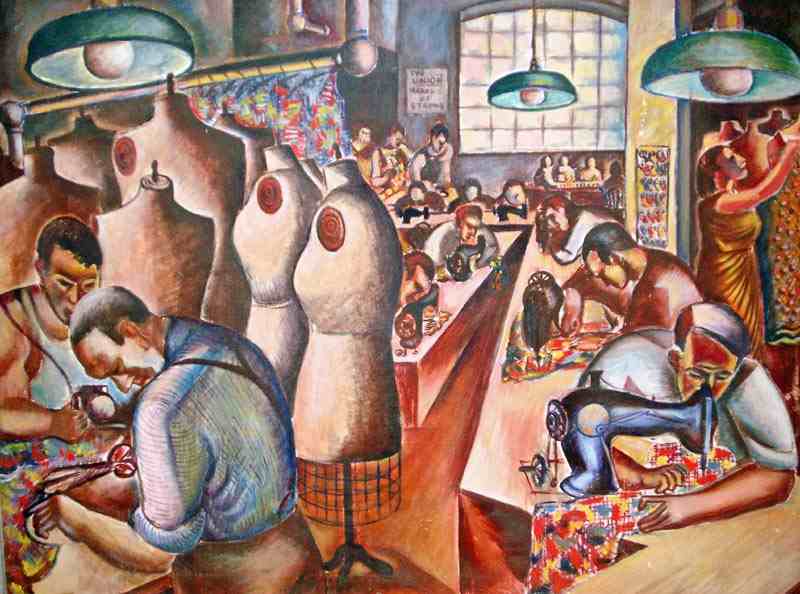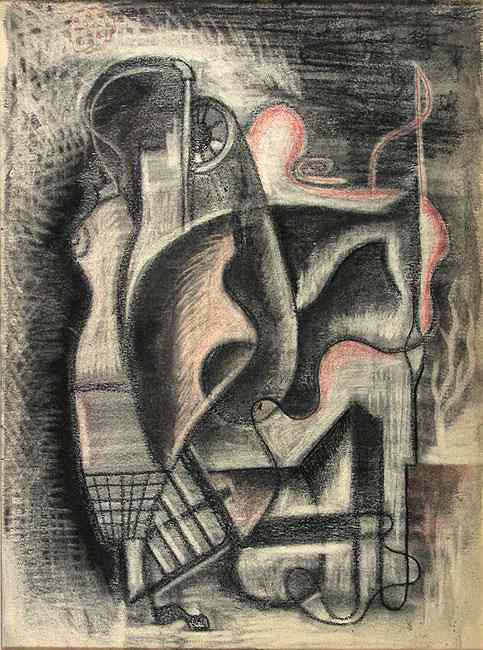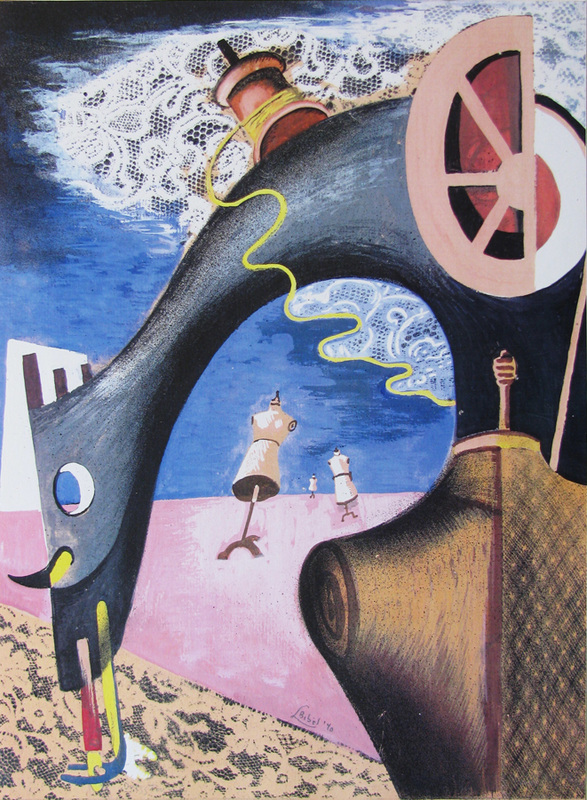Links
Links
Patents of the Fray Pruf, Triangle Underwear, and Manhattan Undergarment Companies
Harry Altman, Vice President of the Triangle Underwear Corporation, owned by his sister-in-law Lillian Messing Beckerman Edelman, obtained Patent 2333404 in 1943 for a method for joining garment panels and forming edges such that “bulky seams are obviated, a saving in material is effected, at least one stitching operation is eliminated, and, in general, a garment of improved construction is provided.” He assigned the patent to David Korn & Co. who manufactured them under the name Fray Pruf Slips. Altman was also engaged with Fray Pruf Slip Company, which sold the slips.
Monroe Messing and Moe Schatzberg, whose pictures appear in “Historical Photographs,” also obtained several patents for the Manhattan Underwear Company, which can be seen here: Patent 119230, Patent 2066298, Patent 2366865, Patent 2369594, Patent 179519.
Mollie Beckerman, “All I Asked of America was Opportunity,” McClure’s (1927)
Mollie Beckerman, head and proprietor of the Standard Underwear Company of New York City, published in 1927 what McClure’s described as “a true story as inspiring to native-born Americans as it is to the aliens struggling in the slums for a chance to live ‘up-town.’” The rags-to-riches autobiography that follows recounts Ms. Beckerman’s arrival from Poland as a widow with three children, her work for six months in a Lower East Side sweatshop, and the launching of her business thereafter — all with illustrations.
Leonard S. Bernstein, “The Man Who Wanted to Buy a Heart”
The stories in “The Man Who Wanted to Buy a Heart,” by Leonard S. Bernstein, address the garment district’s past from the 1930s all the way up to the present. The book gives insight into the days when a woman employee in an undergarment factory didn’t talk about undergarments to the male boss. The cutters’ local was recognizable by shaking hands with one of the many men missing an index finger. The foreman’s life revolved on the day’s production schedule. The operators’ output determined their pay. Between 16¢-20¢ a dozen for a lace neck operation determined by difficulty, and “somewhere within this time-honored charade a correct price was arrived at, usually with much complaint and distrust on both sides.” The stories, gleaned from a lifetime of working in the garment district, reveal the author as a man who’s lived through the implementation of unionization and outsourcing. He’s daily walked around W 36th St. and 6th Ave., long before 7th Ave. became Fashion Avenue.
Click here to read the collection. Women’s Wear Daily and the East Hampton Star have both published reviews.
Read Bernstein’s article, “Why Men’s Suits Don’t Fit.”
Leon Bibel: Art and Activism in the WPA
Exhibition at the Skyscraper Museum — Urban Fabric: Building New York’s Garment District
Slate September 2011 article
“Permanent Record: Entry 1: How I Found the Report Cards, and How They Changed My Life”
WNYC June 2010 article
“The Garment District: So Last-Century, or the Perfect Fit for New York?” by Ilya Marritz
New York Times April 2010 article
“Needle and Thread Still Have a Home,” by Guy Trebay
Benjamin Feldman’s essay on the Fur District of New York City from his blog New York Wanderer
Scandal Sandals & Lady Slippers: A History of Delman Shoes, exhibit at FIT from 9 March-3 April 2010
Mike’s NYC Tours
Licensed tour guide Mike Kaback offers both scheduled and custom tours of the Garment Center, as well as other New York City neighborhoods.
HBO’s Schmatta: Rags to Riches to Rags
International Ladies Garment Workers Union: Social Unionism in Action (online exhibit)
A Perfect Fit: The Garment Industry and American Jewry: Yeshiva University Museum(2005 exhibit)
Fashion Institute of Technology Museum
New York Public Library Fashion Blog
Leon Bibel Paintings
Leon Bibel (1913-1995) is best known for his WPA prints and paintings when he worked as an artist on the New York City Federal Art Project in the late 1930s and early 1940s. Living in such volatile times, the Depression was a major concern and war a topic of great debate. This backdrop gave rise to his passion for issues of poverty, peace and justice, racism, and industrial safety. His iconic images of workers included miners and stevedores. The images here were inspired by Leon’s visits to the Palnel Factory in the Garment Center, which was owned by his wife’s family. Leon loved the machines, the tools, the patterns and the dress forms, and he used many aspects of the iconography of the factory in his art throughout his life.
Images provided by courtesy of Phyllis Wrynn, Park Slope Gallery, Brooklyn, New York
Truth Plus
Jessica Gold’s blog Truth Plus looks at the evolution of the fashion industry in the U.S. Jessica, who has been in the fashion industry for the past decade, was the longtime Director of Marketing at Liz Lange Maternity. Since the company was acquired by a Private Equity fund in 2007, she has run a consulting firm, JG & Co. (www.jgandconyc.com), working primarily with contemporary women’s brands (like Lauren Moffatt, Anna Sheffield, Lucy Sykes, Hayden Harnett, Rachel Antonoff, and Wren), and helping them grow strategically, with an eye towards the bottom line. She is very interested in the history of the Garment District, having worked there for many years. Her blog shows that fashion is a business, not just an art. It discusses a variety of fashion-related topics, speaking with pattern and sample makers, economists, authors, and many others involved on the industry.
For Jessica’s account of the Tuesday, March 22, 2011 Garment Center Town Hall, click here.
Anne Elizabeth Moore
Garment Work is a collaborative performance project and ongoing research investigation into the relationship between Cambodian textile manufacturers and international consumers. Garment Work is a meditation on capitalism, integrity, loss, and perseverance. The project has been exhibited at the Spinnerei in Leipzig, Germany; Meta House in Phnom Penh, Cambodia; DoVA Temporary, Chicago; and the Museum of Contemporary Art. The video was screened at the 2011 College Art Association conference in New York City. This fall, the Garment Work video will be screened at the Artisterium in Tbilisi, Georgia, in a special exhibition at the State Silk Museum.

